How Many Different Lights Are On a Car?
As drivers, we often take for granted the silent guardians that illuminate our journeys – the car lights. Whether piercing through the darkness of night or cutting through the veil of torrential rains, these essential companions are our primary source of vision and safety on the roads. Driving in adverse conditions demands reliable visibility, making car lights a lifeline for drivers, especially during nighttime or challenging weather like torrential rains. Therefore, maintaining car lights is essential so you can use them anytime needed. Generally, each car is equipped with several car lights with different functions. In this article we will be looking for various lights used in cars and the function and purpose of them in detail.

Headlights
Headlights are the eyes of your vehicle, guiding you through the darkness. Serving as the primary source of illumination, they come in high and low beams for different conditions. Regular alignment checks and bulb replacements are crucial to ensure optimal brightness. Headlights not only enhance visibility but play a pivotal role in road safety during nighttime drives, making them an indispensable component for every responsible driver.
- High beam: High beams are the powerhouse of headlights, providing maximum illumination for enhanced visibility in the darkest of conditions. Perfect for open roads, they extend your sight range, allowing you to navigate safely. However, it’s crucial to use them judiciously, switching to low beams when other drivers approach, to avoid blinding them. Mastering the art of toggling between high and low beams is key to optimizing your headlights for a safer and more efficient nighttime driving experience.
- Low beam: Low beams, the subtle yet crucial counterpart to high beams, provide a focused and less dazzling illumination for optimal visibility in regular driving conditions. Perfect for urban areas or when other vehicles are nearby, these beams strike a balance between clarity and consideration for fellow drivers, ensuring a safe and courteous driving experience.
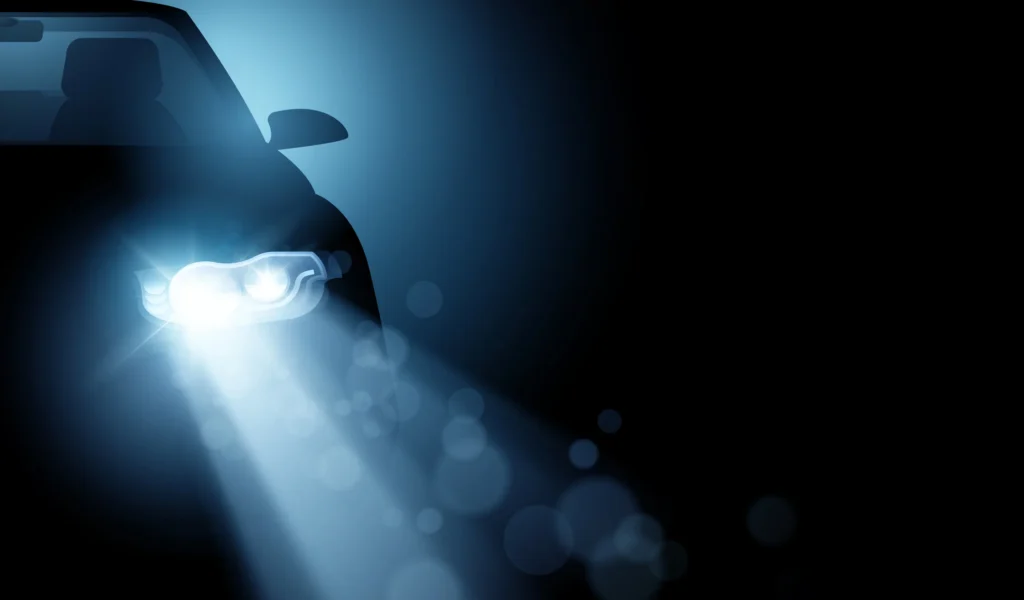
There are mainly three types of bulbs used for the headlights.
- Halogen
- Light emitting diodes (LED)
- Xenon/high intensity discharge (HID)
Fog Lights
Fog lights are specialized vehicle lights designed to improve visibility in foggy or misty conditions. Positioned lower on the vehicle, these lights emit a wide, low beam that minimizes glare and enhances road visibility close to the ground. Their strategic placement and focused illumination make navigating through fog safer by reducing light reflection from water droplets. Fog lights not only benefit the driver but also increase the vehicle’s visibility to others on the road, contributing to overall road safety during adverse weather.
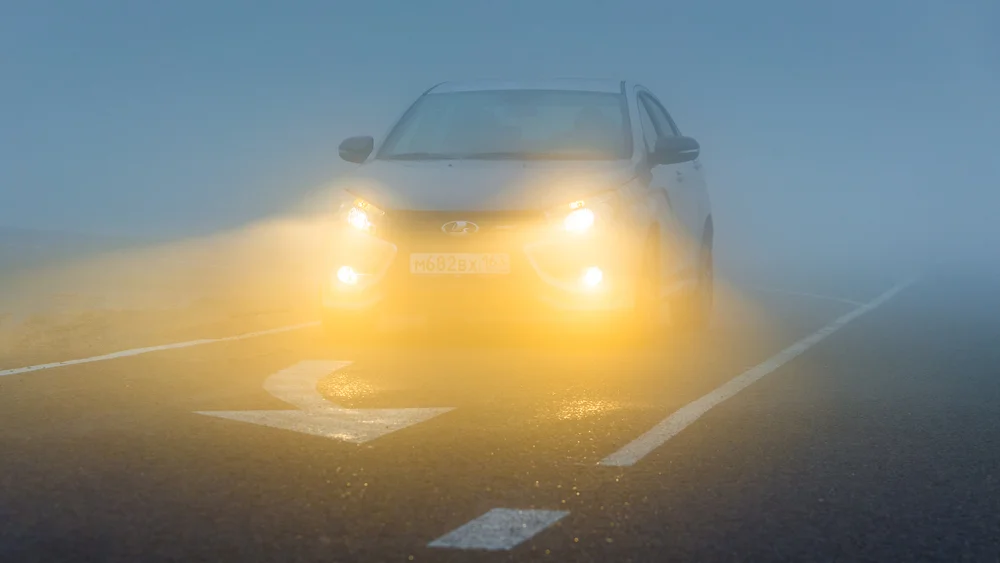
Daytime running lamps (DRL)
Daytime Running Lamps (DRLs) are safety features integrated into vehicles to enhance visibility during daylight hours. Unlike headlights, DRLs are designed to be on whenever the vehicle is in motion, serving as a visual cue to other drivers. Emitting a lower intensity compared to headlights, they improve the vehicle’s conspicuity without causing discomfort to oncoming traffic. Beyond safety, DRLs contribute to accident prevention by making vehicles more noticeable, especially in conditions with varying light levels. As an integral part of modern automotive design, Daytime Running Lamps exemplify a proactive approach to road safety.
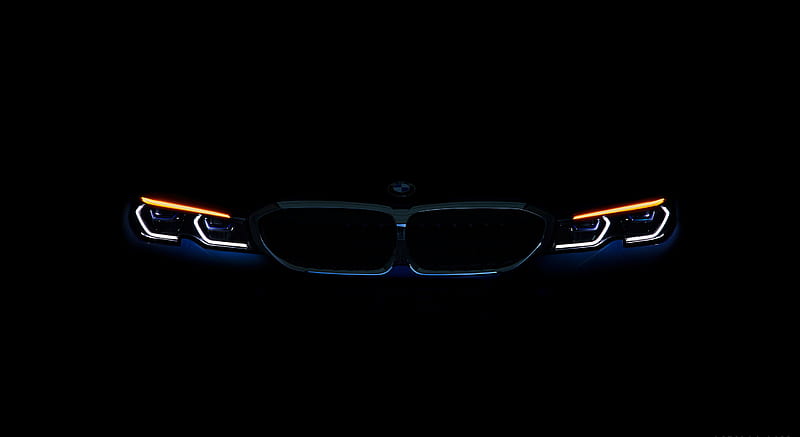
Indicator lights
Indicator lights, commonly known as turn signals, are crucial communication tools in the language of driving. These lights, typically located at the front and rear of a vehicle, convey a driver’s intention to change direction. Activated by the driver through the vehicle’s control system, indicator lights blink rhythmically, signaling upcoming turns or lane changes. Their universal color code amber or orange makes them easily recognizable on the road. It play a fundamental role in promoting road safety, fostering predictability among drivers, and reducing the risk of collisions by signaling planned maneuvers. In the intricate dance of traffic, these small yet significant lights ensure a coordinated and safer flow on our roads.
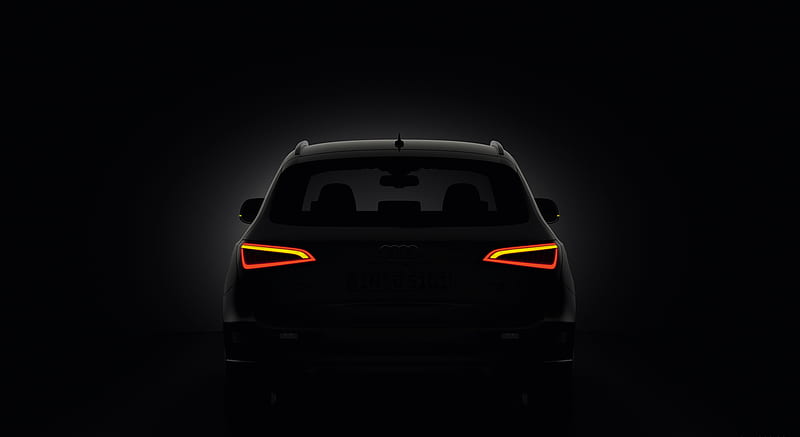
Taillights
Taillights, positioned at the rear of vehicles, serve as essential safety features with dual functions. Primarily, they illuminate the vehicle’s presence to drivers approaching from behind, especially in low-light conditions. When the headlights are switched on, taillights also ensure the vehicle’s visibility from the rear. Furthermore, brake lights integrated into taillights intensify when the driver applies the brakes, signaling deceleration to following traffic. Beyond functional aspects, taillights contribute to the overall aesthetic design of vehicles, seamlessly blending safety with style.

Brake Lights
Brake lights are integrated with the taillights and are vital safety features that communicate a crucial message to other road users. Activated when the driver applies the brakes, they instantly intensify, signaling a decrease in speed or a complete stop. Their bright, attention-grabbing illumination serves as a prompt visual cue, alerting following drivers to impending changes in the vehicle’s movement. Brake lights play a pivotal role in preventing rear-end collisions and contribute significantly to overall road safety. In the symphony of road communication, these lights harmonize with others to create a seamless and secure driving experience for all.
Backup Lights
Backup lights, also known as reverse lights, are integral components at the rear of vehicles designed to enhance safety during backing maneuvers. Activated when the driver shifts into reverse gear, they illuminate the area behind the vehicle, alerting pedestrians and other drivers to the intention of backing up. The bright white light emitted by backup lights not only aids in driver visibility but also serves as a warning signal to those in the vicinity. This feature is particularly crucial in low-light conditions.
Hazard Lights
Hazard lights, often referred to as emergency flashers, are a safety feature in vehicles designed to communicate potential danger or a need for caution. When activated, they cause all turn signal lights on the vehicle to flash simultaneously, creating a highly visible warning signal. Drivers typically use them in situations such as roadside emergencies, accidents, or when the vehicle is stationary in a hazardous location. The distinctive flashing pattern distinguishes hazard lights from regular turn signals, alerting other road users to exercise caution.
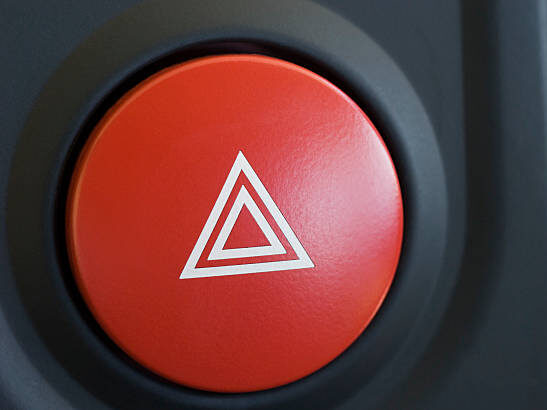
Interior Lights
Car interior lights are essential components that provide visibility and contribute to the overall ambiance inside a vehicle. Positioned strategically throughout the cabin, they are mainly used for locating items. Beyond functionality, it helps to not only enhance safety by illuminating the surroundings during entry and exit. They also play a crucial role in instrument panel illumination, ensuring drivers have clear visibility of key indicators. With customizable options, these combine functionality and aesthetics, creating a well-lit and comfortable driving environment.
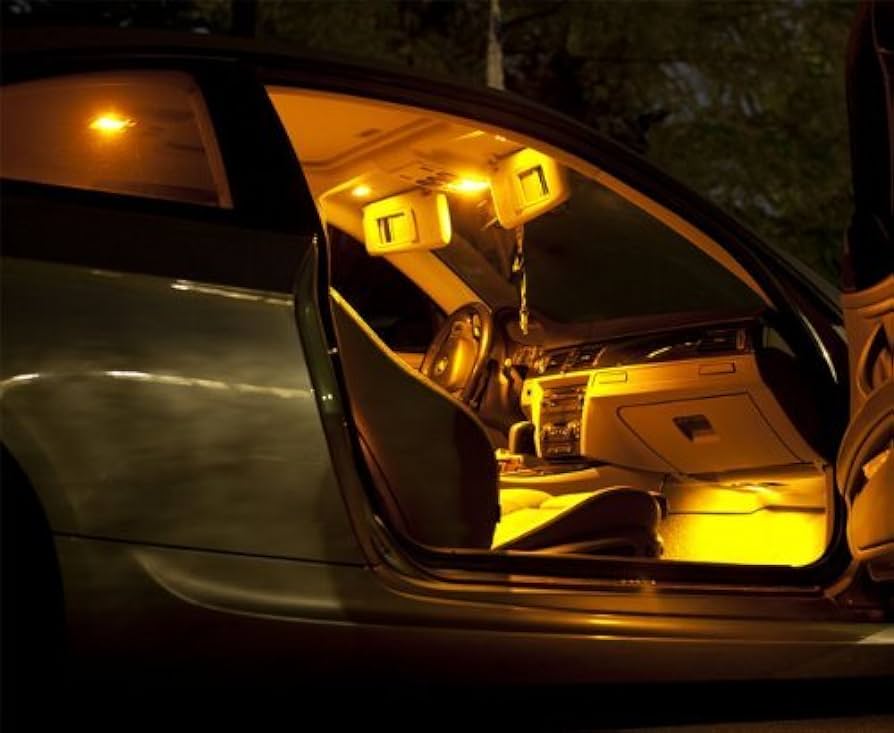
Puddle Lights
Puddle lights are a stylish and practical addition to vehicles, typically positioned under side mirrors or doors. Activated when the car is unlocked or a door is opened, these lights cast a gentle glow on the ground, creating a “puddle” of light around the vehicle. Apart from adding a touch of sophistication, they also serve a functional purpose by illuminating the area around the car, aiding passengers in safely entering or exiting in low-light conditions. This subtle yet effective feature enhances both the aesthetic appeal and safety aspects of the vehicle, contributing to a seamless and welcoming experience.
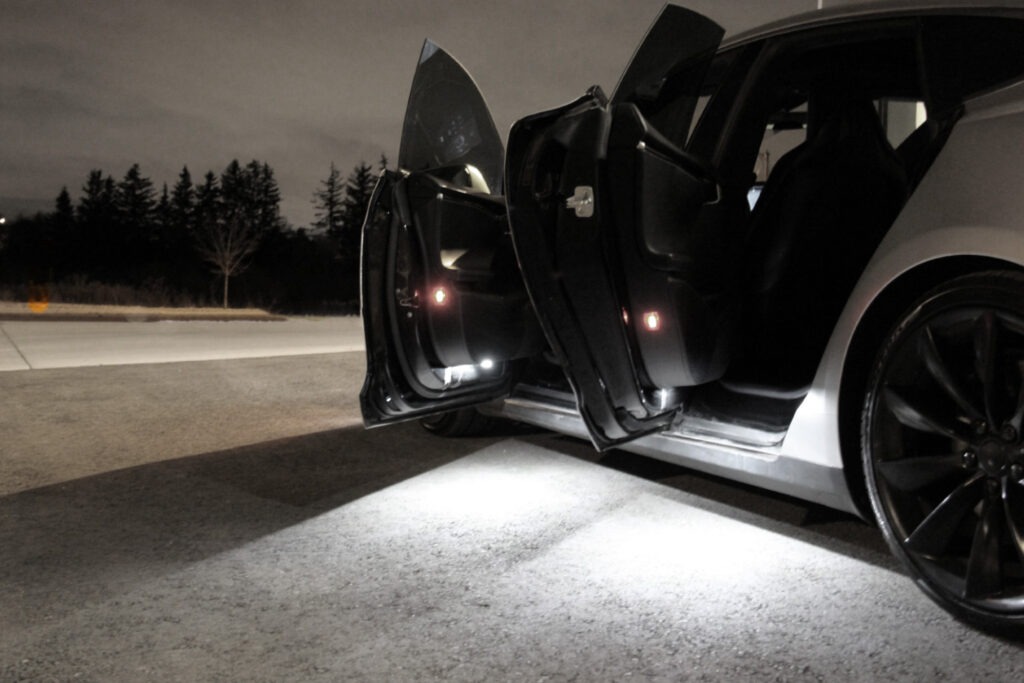
Join Us : WhatsApp Channel
FAQ
Headlights are essential for safe night driving. They provide illumination for the road ahead. Modern headlights come in various types, including LED lights, HID lights, and halogen bulbs. High-beam headlights offer maximum illumination, while low-beam headlights provide deflection to the ground and sides of the road. Remember to use high-beams only when there’s no oncoming traffic.
LED headlights are highly energy-efficient and versatile. They come in various sizes and allow creative designs for both headlights and taillights. Car manufacturers often use LED lights to give vehicles a unique look.
HID lights don’t have a filament like traditional bulbs. Instead, they emit light through a reaction caused by electric current in a bulb filled with various vapors and gases. HID bulbs produce a strong beam of light, making them ideal for headlights.
Fog lights are specialized lights designed for driving in foggy conditions. They emit a wide, low beam to improve visibility close to the ground. Use them when visibility is significantly reduced due to fog or heavy rain.
DRLs are low-intensity lights that automatically turn on when the vehicle is running. They enhance visibility during daylight hours, improving safety by making your car more visible to other drivers.
Tail lights are located at the rear of the vehicle. They serve as brake lights, turn signals, and parking lights. Properly functioning tail lights are crucial for signaling your intentions to other drivers.
Hazard lights, also known as flashers, are used to indicate an emergency situation. They activate all four turn signals simultaneously, alerting other drivers to potential danger or a breakdown.
Interior lights illuminate the inside of the car. They include dome lights, map lights, and ambient lighting. These lights help passengers see inside the vehicle during nighttime or low-light conditions.
Parking lights are low-intensity lights used when the car is parked. They help other drivers see your parked vehicle. Avoid using parking lights while driving.
Stoplights are red lights located at the rear of the vehicle. They activate when you press the brake pedal, indicating that you’re slowing down or stopping. Properly functioning brake lights are crucial for safety on the road.

